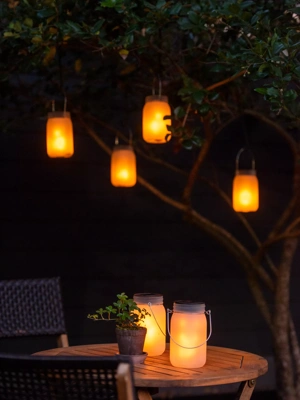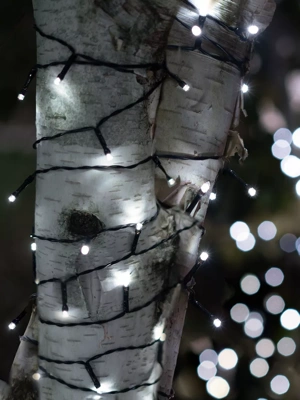How to Choose a Solar Garden Light
 Color-changing planters add magic to the garden at night.
Color-changing planters add magic to the garden at night.Installing outdoor lighting can pose many challenges. In addition to the cost of the lights, it's usually necessary to hire a licensed electrician to do the installation.
Solar-powered lights are an increasingly popular alternative. They are affordable, easy to install yourself and can be relocated easily. You also save on electrical costs.
Until recently, most solar lights emitted only a dim light and were not all that reliable. This has changed, as super-bright LEDs have replaced more conventional filament bulbs. Light-emitting diodes (LEDs) create light without generating the waste heat of normal bulbs, so they are very bright, yet require far less electricity to operate. The result is a dependable, long-term "bulb" that will usually shine for the life of the product.
Other recent advances in solar lighting technology include the development of more efficient photovoltaic cells, improved circuitry and more efficient batteries. These new solar lights are able to perform year-round—even through the cold, short days of winter—with little variation in performance.
When shopping for solar lights, it's important to match the light to the function you want it to perform. There are three primary categories of solar lights for use in the landscape: accent lights, path lights, and spotlights and task lights.
Solar Garden Accents
Accent lights add a pleasant glow to your landscape. Their relatively low level of illumination is designed to "mark a place," not illuminate an object or light a pathway. Due to their low light output, accent lights usually boast longer runtimes than other types of solar lights. In fact, it is not unusual for a quality accent light to run many nights on just a single day's charge.
Accent lights typically use efficient multi-crystalline solar cells that allow them to charge even on cloudy days or in partially shaded areas. Many accent lights utilize amber LEDs to create an even softer ambience than the standard white LEDs. Some of them also "flicker" to simulate candle light. Amber LEDs use less electricity than their white counterparts, which allows for even longer runtimes.
Accent lights can be used to mark landscape hazards, such as a large rock that could be tripped over at night, or as garden features themselves. Compared to the other categories of solar lights, accent lights have the lowest light output and are the most affordable.
Solar Path Lights
As the name implies, path lights are meant to light paths, walkways, driveway perimeters or other small areas around your home and in your landscape. They are often used in multiples to guide the way along a set of stairs or a dark walk. Path lights typically come with a choice of ground stakes, flange mounts and hanging hooks, to give the user a wide choice of positioning options. Most are designed to focus their light downward.
Path lights may also have on-off switches, a feature that allows the homeowner to "store" the electrical charge for a special event and ensure the longest possible run time. Some models may offer options such as high-low power, colored lenses, or timers. Solar path lights are a mid-range choice in terms of price and light output.
Solar Task Lights and Spotlights
Task lights and spotlights are the brightest class of solar lights and usually carry the highest price tag. They are designed to cast a bright beam of light on plants, statuary or entryways. That said, it is important to realize a solar task light will not perform like a standard 100-watt outdoor floodlight. A high-quality solar light with good LEDs can produce a focused beam of light equivalent to a 40-watt incandescent spotlight—an impressive amount of light that's both clean and free.
Most solar task lights and spotlights are designed so they can be mounted in a number of ways and can be adjusted to shine in any direction. Often the solar panel can be mounted separately from the light, which allows you to put the panel in a place where it will get the sun, and the light where it's needed.
Solar task lights and spotlights are generally the most durable class of solar lights. While nearly all solar lights are weatherproof and UV protected, solar Task lights and spotlights are often more ruggedly constructed.
Solar lights that use LEDs have another little-known benefit that makes them especially well suited for landscape use. As temperatures drop, LEDs generate an even brighter light, due to their solid state design. In this respect, solar lights are superior to low-voltage outdoor lights and compact fluorescent lights, which operate less efficiently in very cold conditions. LEDs also have a lifespan in excess of 100,000 hours compared to 2,000 to 3,000 hours for the average incandescent.
Last updated: 03/08/2024
Print this Article:
Related items
Get the Dirt
Stay up to date on new articles and advice. Please fill out the information below.





